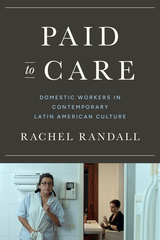12 start with R start with R
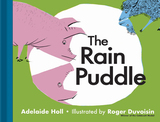
This wonderfully silly children’s book, originally published in 1965, is ideal for reading aloud, a tale that perfectly captures the wonder of discovering the outside world.
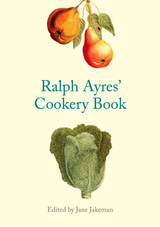
If you've ever wondered what a London Wigg was or why plum cake does not actually contain plums, Ralph Ayres' Cookery Book will prove to be a most rewarding collection. Here the details of sumptuous British meals are meticulously presented, as is their larger context in the history of cooking. Recipes for such famous dishes as Quaking Pudding, Oxford Sausages, Damson Preserve, and other savory English delights fill the pages. Some, such as the famous New College Pudding, are still used today. The volume is beautifully produced, featuring a wealth of full-color botanical illustrations and elegant script reproduced from the original text, and also includes an informative foreword by Bodleian emeritus librarian David Vaisey.
A captivating glimpse into the world of eighteenth-century food and the culture of academia's apex, Ralph Ayres' Cookery Book is a valuable and engaging historical chronicle of British cuisine. It will appeal to social and culinary historians, as well as to the many lovers of griskin and collops.
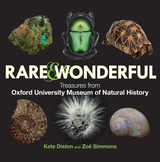
This lavishly illustrated book features highlights from the collections, ranging from David Livingstone’s tsetse fly specimens to Mary Anning’s ichthyosaur, and from crabs collected by Darwin during his voyage on the Beagle to the iconic Dodo, the only soft tissue specimen of the species in existence. Also featured are the first described dinosaur bones, found in a small Oxfordshire village, the Red Lady of Paviland (who was in fact a man who lived 29,000 years ago), and a meteorite from the planet Mars.
Each item tells a unique story about natural history, the history of science, collecting, or the museum itself. Rare & Wonderful offers unique insight into the extraordinary wealth of information and fascinating tales that can be gleaned from these collections.
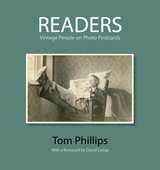
To celebrate the acquisition of the archive of distinguished artist Tom Phillips, the Bodleian Library asked the artist to assemble and design a series of books drawing on his themed collection of over 50,000 photographic postcards. These encompass the first half of the twentieth century, a period in which, thanks to the ever cheaper medium of photography, ordinary people could afford to own portraits of themselves. Each book in the series contains two hundred images chosen from a visually rich vein of social history. Their covers also feature thematically linked paintings, specially created for each title, from Phillips’s signature work, A Humument.
Readers, as its title suggests, shows people reading (or pretending to read) a wide variety of material, from the Bible to Film Fun, either in the photographer’s studio, in their own home, or on vacation on the beach. Each of these unique and visually stunning books give a rich glimpse of forgotten times and will be greatly valued by art and history lovers alike.
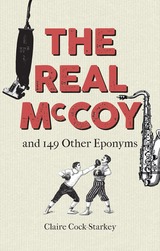
Deriving from numerous sources, eponyms are full of intrigue. This book features one hundred and fifty of the most interesting and enlightening specimens, delving into the origins of the words and describing the fascinating people after whom they were named. Some honor a style icon, inventor, or explorer, such as pompadour, Kalashnikov, and Cadillac. Others have roots in Greek or Roman mythology, such as panic and tantalize. Still others are far from celebratory and were created to brand the negative association of their origins—into this category can be filed boycott, Molotov cocktail, and sadist.
Encompassing words from medicine, botany, invention, science, fashion, food, and literature, this book uncovers the curious tales of discovery, mythology, innovation, and infamy behind the eponyms we use every day. The Real McCoy is the perfect addition to any wordsmith’s bookshelf.
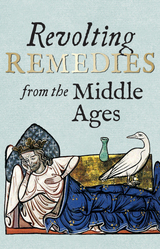
In late medieval England, ordinary people, apothecaries, and physicians gathered up practical medical tips for everyday use. While some were sensible herbal cures, many were weird and wildly inventive, prescribing elixirs and regimens for problems like how to make a woman love you and how to stop dogs from barking at you. The would-be doctors seemed oblivious to pain, and would recommend any animal, vegetable, or mineral, let alone bodily fluid, be ground up, smeared on, or inserted for medical benefit. Full of embarrassing ailments, painful procedures, icky ingredients, and bizarre beliefs, this book selects some of the most revolting and remarkable remedies from medieval manuscripts in the Bodleian Library. Written in the down-to-earth speech of the time, these remedies offer humorous insight into the strange ideas, ingenuity, and bravery of men and women in the Middle Ages, and a glimpse of the often gruesome history of medicine through time.
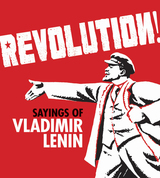
Revolution! Sayings of Vladimir Lenin is a compilation of Lenin’s most famous sayings, taken from speeches, lectures, letters, and recorded conversations. Together, they show his views on topics ranging from democracy to terrorism, from religion to Stalin’s untrustworthiness, and from education to music. Accompanied by a range of striking images, including contemporary propaganda posters, photographs, portraits, illustrations, and Soviet art, these aphoristic proclamations offer an insight into the atmosphere of pre- and post-revolutionary Russia and the mind of one of the twentieth century’s most defining political figures.

Reynard—a subversive, dashing, anarchic, aristocratic, witty fox from the watery lowlands of medieval East Flanders—is in trouble. He has been summoned to the court of King Noble the Lion, charged with all manner of crimes and misdemeanors. How will he pit his wits against his accusers—greedy Bruin the Bear, pretentious Courtoys the Hound, and dark and dangerous Isengrim the Wolf—to escape the gallows?
Reynard was once the most popular and beloved character in European folklore, as familiar as Robin Hood, King Arthur, or Cinderella. His character spoke eloquently for the voiceless and disenfranchised, but also amused and delighted the elite, capturing hearts and minds across borders and societal classes for centuries. Based on William Caxton’s bestselling 1481 English translation of the Middle Dutch, this edition is an imaginative retelling of the Reynard story, expanded with new interpretations and innovative language and characterizations. With its themes of protest, resistance, and duplicity led by a personable, anti-heroic Fox, this gripping tale is as relevant and controversial today as it was in the fifteenth century.
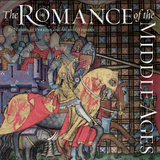
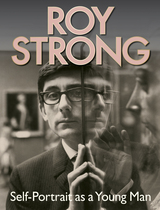
In this book, Strong recounts his early years and the stirrings of what would become a lifelong passion for art. During a childhood spent in suburban North London, Strong recalls himself as a shy and solitary boy who spent his time painting Elizabethan miniatures and Shakespearean set designs. The book follows his progression through grammar school, which he attended alongside Alan Bennett and David Hockney, and university, where he developed a love of learning and enjoyed visits to the theater, opera, and ballet. With remarkable honesty, he explores the important relationships in his life—family, friends, and a schoolteacher with whom he maintained a long correspondence—as well as his debt to figures like Cecil Beaton, Frances Yates, C. V. Wedgwood, and A. L. Rowse.
Richly illustrated throughout with photographs, drawings, and letters, this book offers a compelling look at a young man poised for success.
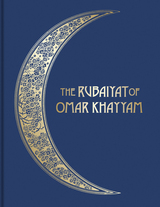
A book of verses underneath the bough,
A jug of wine, a loaf of bread—and thou.
The Rubáiyát is one of the most popular poems of all time. A collection of quatrains composed in the eleventh century by Persian poet and philosopher Omar Khayyám, it was first published in English-language translation by Edward Fitzgerald in 1859. Since then, its melancholy tone and enigmatic philosophy of mourning the painful brevity of life while celebrating what pleasures we may find have made it an inspiration to many writers, including Matthew Arnold and Thomas Hardy. More recently, it has also been the subject of many music adaptations and films.
This collector’s edition of The Rubáiyát features stunning full-color illustrations created by René Bull in 1913 that interpret the poem’s brilliant sensual imagery and provide the perfect complement to Fitzgerald’s translation, which remains the most famous. Every page of poetry in this collector’s edition features unique art nouveau borders in gold, with each illustration framed in a gold border.
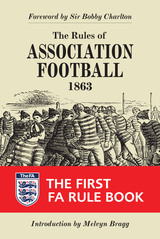
In 1863 a group of Victorian Oxbridge graduates, frustrated by the confusing riot of competing rules that characterized the game of British football, began meeting at the Freemason’s Tavern in Lincoln’s Inn Fields, London, to codify the rules of the game. They quickly drew up the standard set of rules, creating the First Rule Book of the Football Association, reprinted here in its entirety alongside illustrations and drawings of the game.
READERS
Browse our collection.
PUBLISHERS
See BiblioVault's publisher services.
STUDENT SERVICES
Files for college accessibility offices.
UChicago Accessibility Resources
home | accessibility | search | about | contact us
BiblioVault ® 2001 - 2024
The University of Chicago Press


